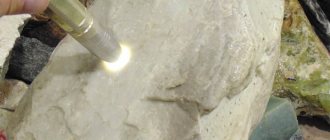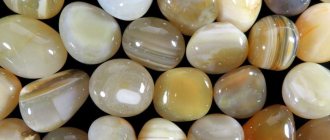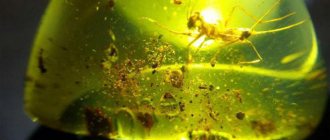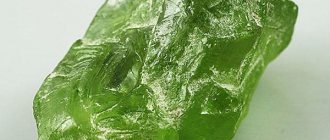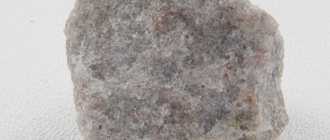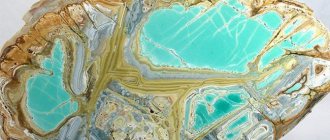| Stone type | Semi-precious, ornamental |
| Prevalence (Deposits) | China, New Zealand, Russia, USA |
| Varieties | Lantian, Nanyang, Xiuyan, Khotan |
| Transparency | Translucent, opaque |
| Shine | Glass, bold |
| Mohs hardness scale | 6—6,5 |
| Chemical composition | Ca2(Mg,Fe)5[Si4O11]2(OH)2 |
| Color | White, blue, yellow, green, red, pink, black |
| Owner's color type | Summer |
| Owner's temperament | Melancholic, Sanguine |
| Names | Alevtina, Galina, Grigory, Inna, Kirill, Lina, Raisa, Taisiya |
| Zodiac sign | Aquarius, Virgo, Cancer |
| Date of Birth | from January 21 to February 18 from August 23 to September 22 from June 21 to July 22 |
| Chinese horoscope | Bull, rabbit |
| Element | Air |
| Planet | Venus, Saturn |
| Day of the week | Wednesday |
| Month | Not found |
| Season | Not found |
| Numerology vibration | 4, 6, 7 |
| Chakra | Anahata, Manipura |
| What stones is it compatible with? | Rock crystal, emerald, labradorite, moonstone |
| What stones is it not compatible with? | Beryl, malachite, sardonyx |
| Therapeutic effect (problems) | Pregnancy, gynecology, mental disorders |
| Therapeutic effect (on organs) | Organs of the gastrointestinal tract |
| Magic properties | Spiritual development, negative energy, rationality, creative development, difficult life situations, luck, strengthening relationships, finance, black magic, energy depletion |
Green jade is a semi-precious stone belonging to the amphiboles with a fibrous structure.
Used in jewelry, crafts, and healing. The healing and magical properties of jade stone are unique. Before you start wearing jade jewelry, you need to consider its compatibility with the signs of the Zodiac.
History and origin
Jade in all its varieties was discovered by mankind in ancient times.
Story
There is a legend that the stone was presented by the gods to the Emperor of China. The bishop received this gift as a token of gratitude for his wisdom and making the right decisions. The gods sent a rain of jade, lasting 3 days.
Jade is closely related to Chinese culture. In ancient times, attributes of power and masks for the dead were made from gemstones. musical instruments, figurines, vases, amulets and plaques that were used as coins.
The nobility used jade utensils, as it was believed that the mineral helped keep food fresh.
Other cultures also paid a lot of attention to stone:
- In New Zealand, amulets were made from it, which were passed down from generation to generation. If the last representative of the clan died, the jade amulet was buried along with the owner.
- The Turks encrusted their belts with the mineral and believed that its energy would help protect them from injury in battle.
- In Mexico, jade was placed in burials. There was a belief that the mineral contributed to the resurrection of the deceased.
One type of tree peony is named after the stone.
Origin
The stone belongs to the silicate class. Jade got its green color due to iron impurities. The hardness index on the Mohs mineral scale is 6.5 points, but the mineral is characterized by a high strength index. Characterized by a greasy or glassy sheen. The stone is not translucent, but if you examine the plates made from it in the light, you can see that they are slightly transparent around the edges.
Interesting! The range of shades varies from emerald to pale green. The color intensity depends on the amount of impurities in the composition. Easy to polish and process.
History of the stone
Green jade is a natural semi-precious stone.
It is the national gem for the Chinese. Legends say that the gods sent a three-day jade rain to the earth. After the end of the rain, the emperor came out into the street, who was the first to take the mineral in his hands and realize its magical properties.
The stone was of great value to the indigenous people of New Zealand. The Aborigines made family amulets from it, which were inherited from parents to children.
Jade came to Russian territory in the 19th century. and immediately became popular. Not only jewelry was made from it, but also home decor and figurines.
Place of extraction
Gem deposits are located near igneous rocks: magma acts on sedimentary dolomites, resulting in the formation of jade. There is an unlimited supply of stone in nature. Today it is mined in New Zealand, Mexico, Turkey, China, and the USA. The most valuable pieces from the point of view of jewelry are supplied by New Zealand and China. Medium quality stones used in ornamental art are mined in Turkey, Mexico and the USA.
Description of the stone
This is a mineral of entangled fibrous amphiboles of the tremolite-actinolite series. The properties of green jade are determined by this structure. It has high impact resistance and toughness: it is a durable stone that is difficult to break into pieces. At the same time, the gem is easy to process.
Almost transparent green specimens are rare; more often, jade has partial or no transparency. The wide range of colors includes different shades of green - from light green with white to rich dark green, almost black.
Physico-chemical characteristics:
- mineral density - 3 g/cm3;
- hardness index - 5 units on the Mohs scale;
- glassy sheen, less often matte or greasy;
- weak pleochroism;
- low degree of transparency (thin sections can be seen through).
The main places of extraction of green gemstones are deposits of New Zealand, China, America, Kazakhstan and Russia (polar Urals, Ospinskoye deposit).
The origin of the mineral is explained by the ingress of magma into sedimentary rocks or serpentinites.
Varieties
Jade is classified depending on its shade, determined by its chemical composition:
- Green: contains magnesium and iron. The shade varies from pale green to rich emerald. There are also swamp-colored specimens.
- Brown: characterized by iron content.
- Pink: contains magnesium.
Must See: Rare and Valuable Green Diamond
White and black specimens do not contain any impurities.
Types of stone
Experts distinguish several types of stone. Namely:
- Imperial jade is the most expensive stone, which is considered the standard among jades. It has a rich and bright emerald color without any gray impurities.
- Kingfisher is another jade with a clear green tonality, but is slightly paler than imperial jade.
- Apple is a stone of a thick yellow-green hue.
- Moss on snow is a stone with a white base, along which numerous green veins are intertwined.
It is worth noting that the healing and magical properties of jade are the same for all varieties.
Medicinal properties
The healing properties of the mineral were first discovered in Ancient China. Healers used the stone to treat a variety of diseases. Heated stones were applied to painful points of the body, as its energy relieves pain. The powdered gem was added to potions and elixirs of longevity. And today, green jade is actively used in lithotherapy.
Overall Impact
Visually, the pebbles resemble a human kidney. Therefore, jade is used in the treatment of kidney and bladder diseases: cystitis, pyelonephritis, cysts and others. To treat the organs of the excretory system, it is necessary to apply heated minerals to the area of the kidneys and bladder. As a result of this procedure, spasm and pain disappear. Water infused with stones, when used internally, effectively treats pain in the stomach and liver.
The energy of jade also helps to cope with headaches caused by migraines, fluctuations in blood pressure, nervous tension and other negative factors. The stone helps normalize cerebral circulation, which has a beneficial effect on memory and concentration. Jade is also credited with pronounced anti-aging properties.
Important! The mineral is suitable for men, as it has a beneficial effect on potency and the condition of the genitourinary system.
View this post on Instagram
Jade is the most revered stone in China (it is noteworthy that there are practically no deposits of it in the Celestial Empire itself) and one of the most ancient stones used by man to make jewelry
